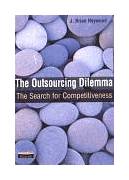|
||
• wydawnictwa polskie
• Zamów informacje o nowościach z wybranego tematu • kontakt
• Cookies na stronie |
OUTSOURCING DILEMMAHEYWOOD B.wydawnictwo: FT/PH , rok wydania 2002, wydanie Icena netto: Summary Outsourcing of some business functions pre-dates the technological revolution of the latter part of the 20th century. Nevertheless, 99 percent of outsourcing would not be logical or necessary if it were not for the constantly changing and improving technology. Despite the circumstances, most organizations are left with no alternative but to keep trying to improve their systems. They then have two basic alternatives. They can either do it in-house by buying the necessary equipment, software, and external help, or they can externalize the function completely by taking one of the outsourcing routes. Research undertaken into project failure rates at the beginning of 2000 has provided the author with a unique insight into the real level of success obtained from choosing either internal or external solutions to the competitive problem. The Outsourcing Dilemma presents the arguments for and against outsourcing and suggests ways in which the enormous problems of maintaining competitiveness might be approached. The book examines:
The Outsourcing Dilemma includes controversial case studies highlighting the advantages and potential pitfalls of outsourcing, and a revolutionary long-term competitiveness option - "Business Satellites" - that does not require short-term dramatic change, expense, and disruption. Competitive advantage is a choice. Who are you going to entrust it to? Table of Contents 206 Pages Paperback Księgarnia nie działa. Nie odpowiadamy na pytania i nie realizujemy zamówien. Do odwolania !. |


